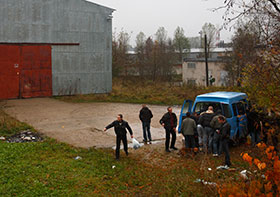HIV/AIDS epidemic in Europe: vulnerability

WHO/Piotr Malecki
Director of the Vilnius Centre for Addictive Disorders, Lithuania
Certain key population groups are more vulnerable to HIV infection and have poorer access to services for testing, counselling, treatment and care. These include people who inject drugs, men who have sex with men, sex workers, migrants, prisoners and transgender people.
Efforts to address the HIV epidemic should focus on creating an enabling environment and addressing the social determinants of health.
Reducing vulnerability and removing structural barriers to accessing services make up the fourth strategic direction of the European Action Plan for HIV/AIDS 2012–2015, adopted by Member States in 2011.
Progress in addressing vulnerability and access to HIV services
Thirteen of 28 European countries (46%) have reported that some of their laws, regulations or policies presented obstacles to effective HIV prevention, treatment and care, and support for key populations and other vulnerable subpopulations.
Most Member States have made progress in reducing vulnerability, for example, by explicitly addressing or reflecting human rights in national AIDS strategies and by consulting and involving civil society in decision-making on and policy formulation on HIV and viral hepatitis.
In most countries, civil society is involved to various degrees in the planning and budgeting of national strategic plans.
WHO support to European countries
WHO/Europe supports Member States in reducing vulnerability and removing structural barriers by:
- working closely with civil society on monitoring aspects such as HIV drug stock-outs, HIV testing and counselling practices and programme responses, and by advising on various topics;
- responding to attempts to extend policies and practices for mandatory HIV testing and continuing to oppose mandatory testing;
- opposing laws and practices that hinder access to prevention and treatment and that marginalize and criminalize key populations;
- contributing to a systematic review to identify and synthesize prevalence estimates and risk factors among people who inject drugs, which found that contact with law-enforcement agencies and the legal environment is associated with risk of HIV infection; and
- providing advocacy and assistance in promoting and implementing policies and practices related to the HIV response that are based on evidence and human rights.
In July 2014, WHO released new guidelines stressing the need to increase key populations’ access to HIV services. The “Consolidated guidelines on HIV prevention, diagnosis, treatment and care for key populations” outline steps for countries to take in reducing new infections and increasing access to services for five key populations: men who have sex with men, people in prison, people who inject drugs, sex workers and transgender people.
Progress report for 2014 Regional Committee
The 2011 WHO Regional Committee for Europe adopted the European Action Plan for HIV/AIDS 2012–2015 and requested the WHO Regional Director for Europe to report on its implementation to the 2014 session. The report will describe the progress made and challenges remaining.



